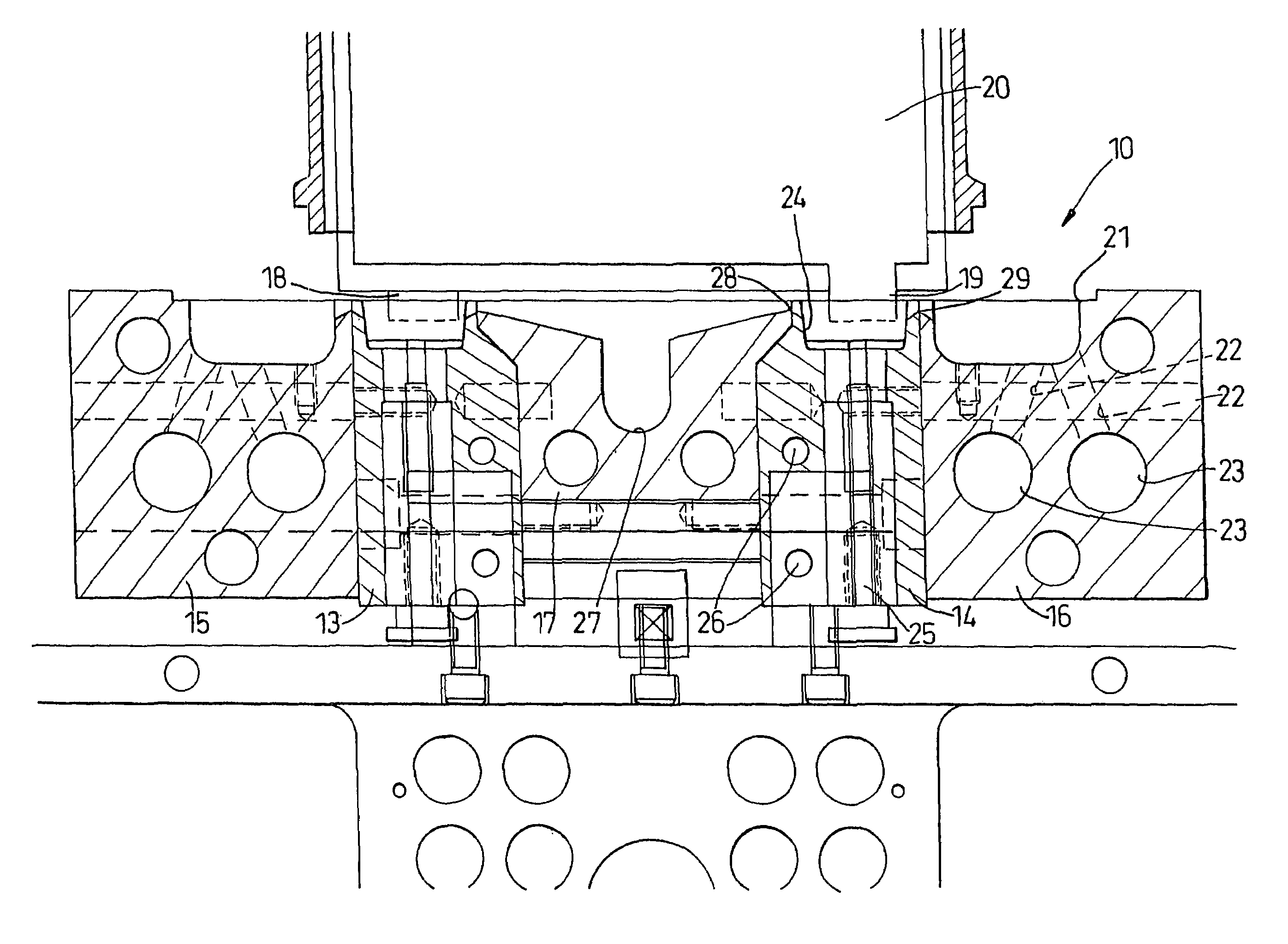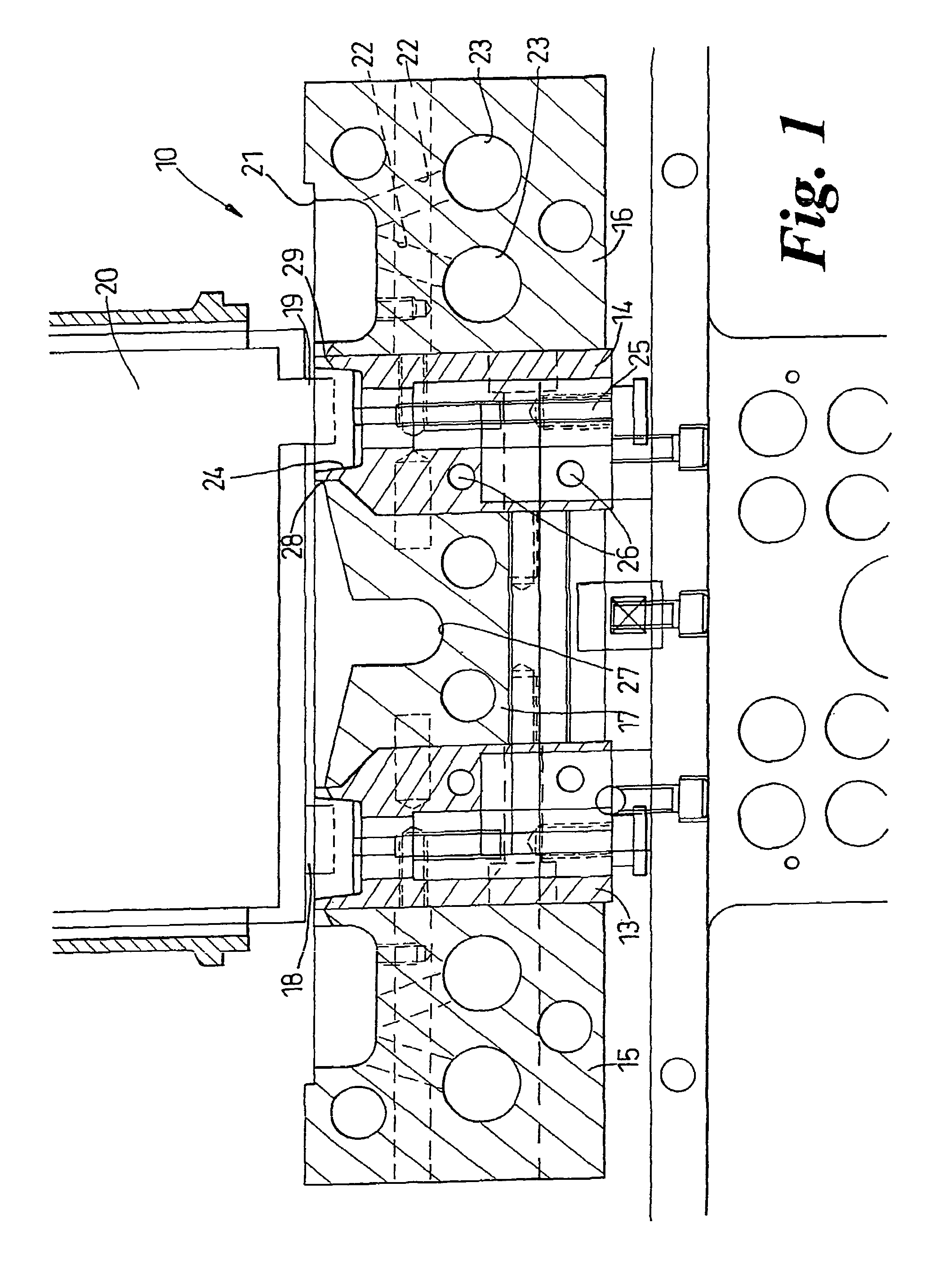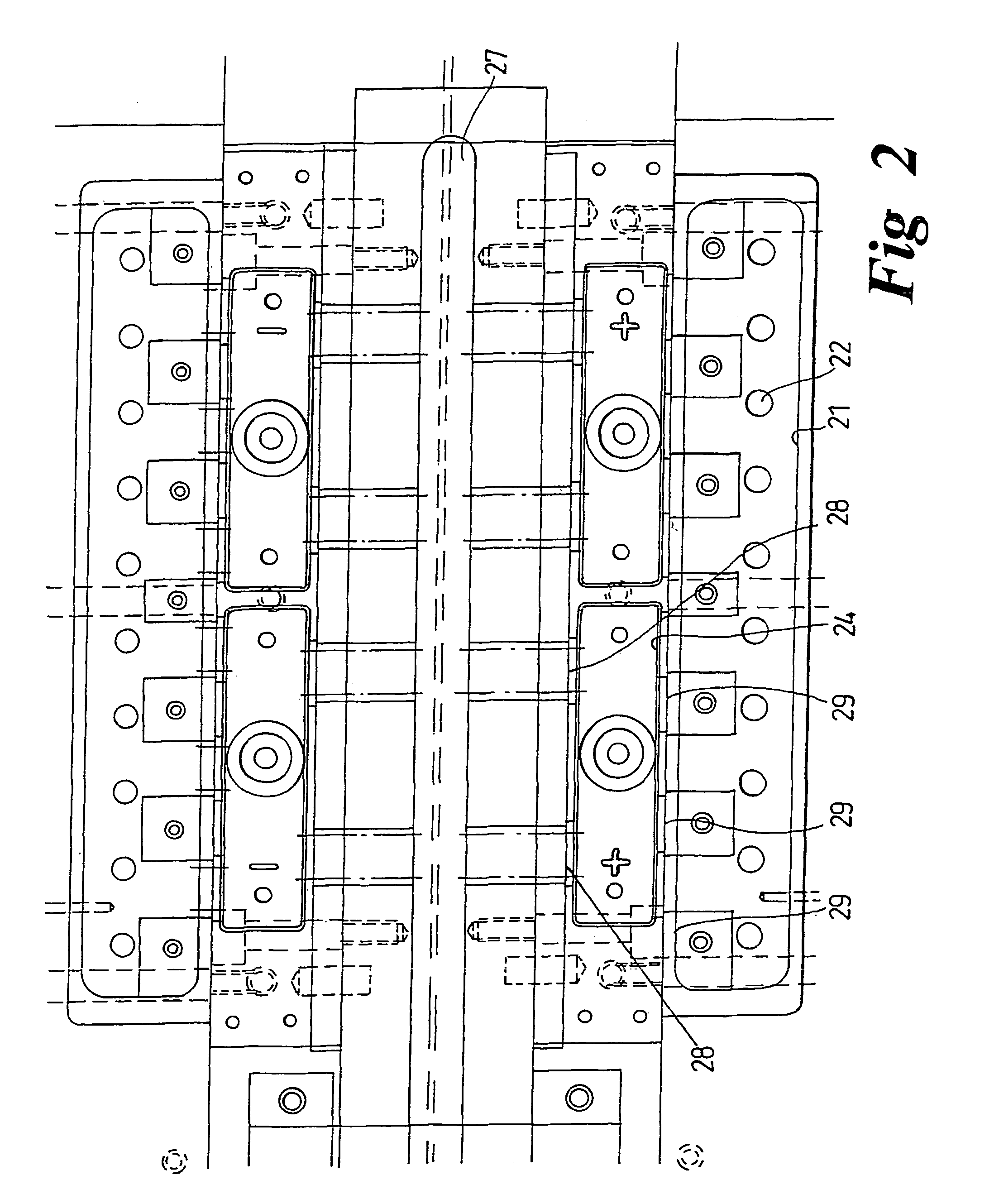Moulding apparatus
a technology of straps and moulding parts, which is applied in the direction of nanobatteries, sustainable manufacturing/processing, cell components, etc., can solve the problems of tail formation, no proper joint formation, and submerged surface of lugs melting
- Summary
- Abstract
- Description
- Claims
- Application Information
AI Technical Summary
Benefits of technology
Problems solved by technology
Method used
Image
Examples
Embodiment Construction
[0014]Broadly the apparatus, which is generally indicated at 10, comprises a pair of mould blocks 13,14, respective lead inlet blocks 15, 16 and a common lead outlet block 17. The combination of 13,15, and 17, operates identically to the combination 14,16,17 and the construction and operation of the apparatus 10 will be described solely in connection with the latter combination. Two combinations are required, so that straps can be formed simultaneously on the positive lugs 18 and the negative lugs 19 of the battery plates 20.
[0015]The lead block 16 has a lead reservoir, in the form of channel 21 into which lead can upwardly well through shafts 22 that are connected to respective supply pipes 23, which are in turn supplied by a lead pot not shown. The bulk of the block 16 is maintained at an elevated temperature of around 400 to 500° C., which is substantially above the melting point of the lead alloys used in the process, which melt, typically, between 250 and 310° C.
[0016]The mould...
PUM
| Property | Measurement | Unit |
|---|---|---|
| Temperature | aaaaa | aaaaa |
| Temperature | aaaaa | aaaaa |
| Length | aaaaa | aaaaa |
Abstract
Description
Claims
Application Information
 Login to View More
Login to View More - R&D
- Intellectual Property
- Life Sciences
- Materials
- Tech Scout
- Unparalleled Data Quality
- Higher Quality Content
- 60% Fewer Hallucinations
Browse by: Latest US Patents, China's latest patents, Technical Efficacy Thesaurus, Application Domain, Technology Topic, Popular Technical Reports.
© 2025 PatSnap. All rights reserved.Legal|Privacy policy|Modern Slavery Act Transparency Statement|Sitemap|About US| Contact US: help@patsnap.com



